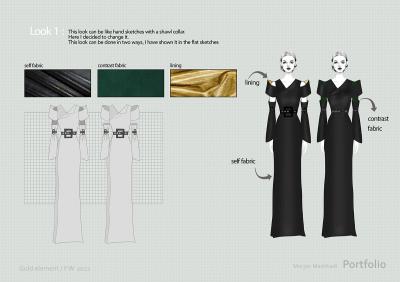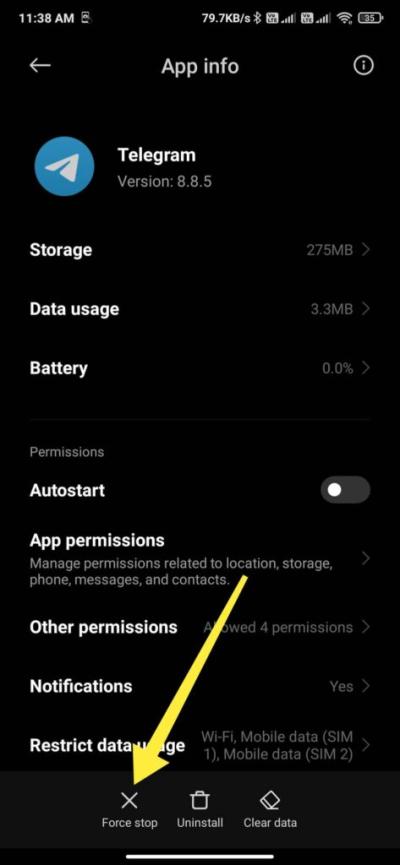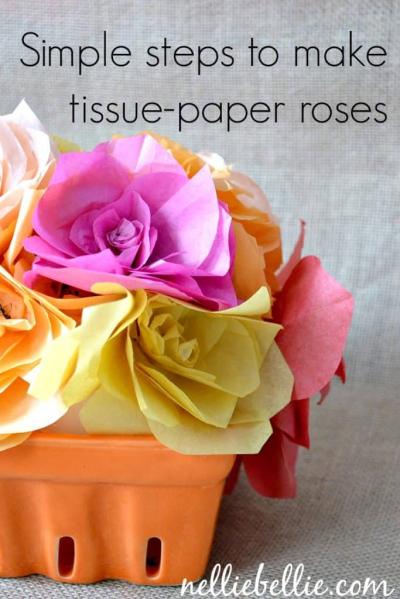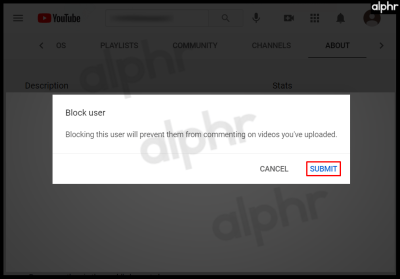The journey of artificial intelligence in art creation is a story of continuous innovation and breakthroughs. From its early stages to the sophisticated systems of 2024, AI has remarkably transformed the landscape of artistic creation. Here's a look at the key milestones in this evolution:
- Initial Experiments: The earliest forms of AI in art were basic algorithms designed to create simple patterns and shapes. These were more mathematical than artistic, laying the groundwork for more complex applications.
- Generative Art: In the early 2000s, AI began to be used for generative art. Artists and programmers collaborated to create systems that could produce unique and complex images, albeit with significant human input and guidance.
- Deep Learning Revolution: The introduction of deep learning and neural networks in the 2010s marked a significant turning point. AI systems could now learn from large datasets of images, leading to more refined and sophisticated outputs.
- Neural Style Transfer: The advent of neural style transfer allowed AI to apply the style of one image to the content of another, resulting in fascinating combinations and a surge in AI-assisted art projects.
- Text-to-Image Generation: The recent development of text-to-image generation has been a game-changer. With just a description, AI can now generate detailed and accurate visual representations, pushing the boundaries of creativity.
In 2024, the capabilities of AI in art creation have reached unprecedented levels. The table below highlights the advancements in AI art generators over the years:
| Year | Development | Impact on Art Creation |
|---|
| Early 2000s | Basic Generative Algorithms | Introduction of algorithmic creativity |
| 2010s | Deep Learning & Neural Networks | Improved realism and complexity in AI-generated art |
| Early 2020s | Neural Style Transfer | Fusion of different artistic styles and content |
| 2024 | Advanced Text-to-Image Generation | Highly accurate visual representations from textual descriptions |
The evolution of AI in art creation is not just a technological narrative but also a cultural and artistic one. It reflects a growing synergy between human creativity and machine intelligence, opening up new realms of possibilities for artists and creators around the world. As we look towards the future, it's clear that AI's role in art will continue to evolve, blurring the lines between technology and art even further.
As we delve into the world of AI art generators in 2024, it's evident that the technology has advanced leaps and bounds. The best AI art generators now boast a range of features that cater to both professional artists and hobbyists alike. Below, we explore the key features that set apart the top AI art generators in this innovative era.
- High-Resolution Output: Modern AI art generators are capable of producing images with incredibly high resolution, ensuring that the generated artwork is clear, detailed, and suitable for various uses, including print media.
- Complex Style Rendering: These tools can mimic a wide range of artistic styles, from classical to contemporary, allowing users to create artworks in the style of famous painters or entirely new and unique styles.
- Advanced Text-to-Image Capabilities: The ability to convert textual descriptions into vivid images has become more refined. Users can input detailed descriptions and receive precise visual representations, making it a powerful tool for conceptualizing and visualization.
- Interactive Editing Tools: Many AI art generators now include interactive tools that allow users to make real-time adjustments to the generated art, offering greater control over the final output.
- Seamless Integration: Integration with other software and platforms is a key feature, enabling artists to incorporate AI-generated art into their existing workflow effortlessly.
- User-Friendly Interface: Despite the complexity of the underlying technology, these generators have user-friendly interfaces that make them accessible to individuals without technical expertise.
Let's look at a comparative table that highlights the evolution of features in AI art generators from 2020 to 2024:
| Year | Key Features | Impact on Users |
|---|
| 2020 | Basic style transfer, moderate resolution output | Limited styles and output quality |
| 2022 | Improved text-to-image, better style rendering | Enhanced creativity with better style options |
| 2024 | High-resolution output, advanced text-to-image, interactive editing | Unprecedented control and quality in art creation |
The best
AI art generators of 2024 stand out not just for their technological sophistication but also for their ability to democratize art creation. These features empower a broader range of individuals to engage in artistic endeavors, leading to an exciting era of creativity and innovation in the world of art.
How AI Art Generators are Changing the Creative Landscape
The advent of AI Art Generators is revolutionizing the creative landscape in several profound ways. From altering artistic workflows to democratizing art creation, the impact of these tools is widespread. Let's delve into the specific changes they are bringing about:
- Enhancing Creative Possibilities: AI art generators open up a world of possibilities that were previously unimaginable. Artists can experiment with complex styles and techniques that would be time-consuming or impossible to achieve manually.
- Democratizing Art Creation: By simplifying the art creation process, these tools make it possible for individuals without formal art training to create stunning works of art, thus democratizing the field of artistic creation.
- Speeding Up the Creative Process: AI art generators can produce art in a fraction of the time it takes to create it manually. This rapid generation allows for quicker iterations and a faster creative process.
- Personalization and Customization: These tools enable a high degree of personalization, allowing users to create highly customized images based on specific inputs, making them ideal for bespoke artwork and designs.
- Transforming Commercial Art: In industries like advertising, gaming, and film, AI art generators are being used to create concept art, promotional materials, and more, significantly reducing production times and costs.
Here's a table that illustrates the changes brought by AI art generators in various domains:
| Domain | Before AI Art Generators | After AI Art Generators |
|---|
| Art Creation | Limited to traditional methods and digital tools | Expanded with AI-driven styles and techniques |
| Commercial Art | Time-consuming and resource-intensive | Efficient, cost-effective, and versatile |
| Personal Use | Dependent on artistic skills | Accessible to all, regardless of skill level |
| Education and Training | Conventional teaching methods | Enhanced with AI tools for learning and experimentation |
The influence of AI art generators extends beyond just creating art; it's reshaping how we perceive and interact with art. By breaking down technical barriers and fostering a more inclusive art community, AI art generators are not just changing the creative landscape; they are redefining it for a new era of digital creativity.
Comparing Top AI Art Generators of 2024
In 2024, the market is flooded with a variety of AI art generators, each offering unique features and capabilities. To help you navigate this landscape, we have compared some of the top AI art generators, focusing on their key aspects such as user interface, quality of output, customization options, and more.
- User Interface: A critical aspect that determines the accessibility and ease of use for both professionals and amateurs.
- Quality of Output: This refers to the resolution, detail, and artistic quality of the images produced.
- Customization Options: The ability to tweak and tailor the art according to user preferences is crucial for creativity.
- Style Variety: The range of different artistic styles that the generator can emulate or create.
- Speed: How quickly the tool can generate art, which is particularly important in a professional setting.
Below is a comparative table that provides an overview of some of the top AI art generators in 2024:
| AI Art Generator | User Interface | Quality of Output | Customization Options | Style Variety | Speed |
|---|
| ArtGenPro | Intuitive and user-friendly | High-resolution, detailed | Extensive | Wide | Fast |
| CreativeAI | Simple for beginners | Medium to high resolution | Moderate | Moderate | Very fast |
| ImagineCraft | Advanced, for professionals | Ultra-high resolution | Highly customizable | Extensive | Medium |
| StyleSynth | Moderately easy | High resolution | Good | Specialized in style synthesis | Fast |
Each of these AI art generators has its strengths and is suited to different types of users. ArtGenPro and CreativeAI are more user-friendly and cater to a broader audience, including hobbyists and those new to AI art. In contrast, ImagineCraft offers more sophisticated options for professional artists, while StyleSynth excels in creating art in a variety of unique styles.Ultimately, the choice of AI art generator depends on the specific needs and skill levels of the users. These generators, with their diverse capabilities, signify a significant advancement in the field of digital art, offering tools that cater to a wide spectrum of creative demands.
The surge in AI-generated art is not just a novelty; it's finding practical applications across various sectors. These applications range from commercial to personal use, each showcasing the versatility and potential of AI in art. Let’s explore some of the key areas where AI-generated art is making a significant impact:
- Digital Marketing and Advertising: AI-generated art is being increasingly used to create eye-catching graphics for digital marketing campaigns and advertisements. Its ability to quickly produce diverse and unique visuals is particularly valuable in these fast-paced industries.
- Entertainment and Media: In the world of film, television, and video games, AI art generators are utilized for creating concept art, backdrops, and character designs, significantly speeding up the pre-production process.
- Fashion and Textile Design: The fashion industry leverages AI-generated patterns and designs to create innovative textiles and clothing lines, pushing the boundaries of traditional fashion design.
- Interior and Architectural Design: AI art generators assist in visualizing architectural projects and interior designs by creating lifelike renderings and virtual models, aiding both designers and clients in decision-making processes.
- Educational Tools: These generators serve as excellent educational tools in art and design schools, helping students learn about different art styles, composition, and color theory.
- Personalized Art Creation: For personal use, individuals can create customized artworks, greeting cards, and decorations based on specific themes or personal photographs.
Here's a brief overview of the impact of AI-generated art in different fields:
| Field | Application of AI Art | Impact |
|---|
| Digital Marketing | Ad visuals, social media posts | Enhances engagement, reduces production time |
| Entertainment | Concept art, character design | Streamlines creative process, offers unique designs |
| Fashion | Pattern design, trend prediction | Brings innovation, enables rapid prototyping |
| Interior Design | Room visualization, color schemes | Improves client visualization, aids in design planning |
| Education | Teaching tool for art and design | Enhances learning, provides practical experience |
| Personal Use | Customized artworks, gift items | Offers personalization, fosters creativity |
AI-generated art, with its vast range of applications, is not only transforming the artistic landscape but also proving to be a valuable asset in numerous other fields, blending creativity with technology to enhance and streamline processes.
User Experience: Navigating AI Art with Ease
The user experience (UX) in navigating AI art generators is a crucial aspect that can significantly influence their adoption and effectiveness. A well-designed UX makes it easier for users, regardless of their technical skills, to interact with AI tools and create art. Let’s examine the key components of a good user experience in AI art generators:
- Intuitive Interface: The interface should be straightforward and easy to navigate, enabling users to find what they need without confusion or frustration.
- Clear Instructions and Guidance: Adequate guidance, such as tutorials or tooltips, helps users understand how to use different features and functions of the AI art generator.
- Responsive Design: The tool should work seamlessly across various devices and platforms, offering a consistent experience whether on a desktop, tablet, or smartphone.
- Quick and Efficient Processing: Speed is essential in the UX of AI art generators. Users expect prompt responses and fast processing of their inputs to generate art.
- Customization Options: A range of customization options allows users to have more control over the art creation process, catering to their specific artistic visions.
- Preview and Edit Features: The ability to preview and edit artworks before finalizing them is important for users to achieve the desired outcome.
Here’s how a user typically interacts with an AI art generator, highlighting the user experience journey:
| Step | Action | User Experience Focus |
|---|
| 1 | Accessing the tool | Easy navigation and accessibility |
| 2 | Understanding the interface | Intuitive design and clear instructions |
| 3 | Inputting parameters | Simple input methods, guidance on options |
| 4 | Art generation process | Efficient processing, progress indicators |
| 5 | Previewing and editing | Easy-to-use editing tools, real-time previews |
| 6 | Finalizing and downloading | Simple saving/exporting options |
This user experience journey underlines the importance of simplicity, efficiency, and clarity in the design of AI art generators. By ensuring a positive UX, these tools not only become more accessible to a wider audience but also enhance the overall creative process, making art creation a more enjoyable and fulfilling experience.
Future Prospects: What's Next for AI in Art?
The integration of Artificial Intelligence in the field of art is not just a fleeting trend; it's a burgeoning area that's set to expand and evolve significantly in the coming years. As we look towards the future, several prospects and developments are likely to shape the next phase of AI in art. Here's an exploration of what we can expect:
- Advanced Personalization: AI art generators will become more adept at creating highly personalized art pieces based on user preferences, history, and even emotional states, offering a more tailored artistic experience.
- Integration with Virtual and Augmented Reality: The combination of AI with VR and AR technologies could revolutionize how we interact with art, leading to immersive art experiences and new forms of digital installations.
- Enhanced Collaborative Tools: We can anticipate the development of more sophisticated collaborative platforms where artists and AI work in tandem, pushing the boundaries of creativity and innovation.
- Increased Accessibility: As AI art tools become more user-friendly and accessible, they will open up the world of art creation to people without formal art training, democratizing the art creation process.
- Artistic Style Evolution: AI algorithms will continue to evolve, potentially developing new artistic styles and aesthetics that are currently unimaginable, further enriching the art world.
- Art Therapy and Mental Health: AI-generated art could play a significant role in therapeutic settings, helping individuals express emotions and alleviate mental health issues through personalized art creation.
Here's a glimpse into the potential advancements in AI and their impact on art:
| Advancement | Potential Impact on Art |
|---|
| Machine Learning Improvements | More nuanced and sophisticated art generation |
| AI and Human Collaboration | New collaborative artworks, blending human creativity with AI precision |
| AI in Art Education | Revolutionizing learning and teaching methods in art |
| AI-Generated Art in Public Spaces | More interactive and dynamic public art installations |
| AI in Art Conservation | Using AI to preserve and restore historical artworks |
As AI continues to advance, the realm of art will witness significant transformations, not only in the creation process but also in how we perceive, interact with, and understand art. These changes promise to open up new horizons in the artistic world, making the future of AI in art an exciting prospect to look forward to.css
Copy code
- How Does an AI Art Generator Work?
Most AI art generators use a type of machine learning called neural networks. These networks are trained on large datasets of images and learn to recognize and replicate various artistic styles and elements, allowing them to generate new, unique pieces of art.
- Can AI Art Generators Create Original Artworks?
Yes, AI art generators can create original artworks. While they are influenced by the data they have been trained on, the combination of elements and styles they use can produce unique and original pieces.
- Is Art Created by AI Truly Art?
This is a subject of debate. Some argue that since AI lacks consciousness and intention, its creations can't be considered true art. Others believe that the artistic value lies in the output and the creative process, regardless of whether a human or an AI produced it.
- Can I Use AI-Generated Art Commercially?
This depends on the specific AI art generator's terms of service and copyright laws. Some AI-generated art may be freely used, while others might require licensing or have restrictions on commercial use.
- Will AI Art Generators Replace Human Artists?
While AI art generators are becoming more sophisticated, they are not likely to replace human artists. Instead, they are seen as tools that can enhance and complement human creativity.
- How Can I Get Started with Using an AI Art Generator?
To start using an AI art generator, choose a platform or tool, usually available online, and follow the instructions provided. Many tools offer user-friendly interfaces that require no technical background.
- Are AI Art Generators Expensive to Use?
The cost of using AI art generators varies. Some are free, while others might require a subscription or payment per use. The price often depends on the features and capabilities of the tool.
Conclusion: The Impact of AI Art Generators on the Creative World
The emergence of AI art generators has marked a significant milestone in the intersection of technology and creativity. These tools are not just novelties but have started to play a transformative role in the creative landscape. Here, we reflect on the impact of AI art generators and what it means for the future of art and creativity.Firstly, AI art generators have democratized the process of art creation. They provide a platform for individuals without formal training in art to explore their creativity, thereby opening up the world of art to a broader audience. This democratization fosters inclusivity and diversity in artistic expression.Secondly, the use of AI in art has stimulated a new form of collaboration between humans and machines. Artists are using these tools to push the boundaries of their creativity, experimenting with new styles and techniques that were previously unattainable. This synergy between human intuition and AI’s capabilities is leading to the birth of new art forms and aesthetics.Furthermore, AI art generators challenge our traditional notions of creativity and authorship. They invite us to reconsider what constitutes art and the role of the artist in the creative process. This philosophical and ethical exploration adds depth to our understanding and appreciation of art in the modern world.However, it’s also crucial to be mindful of the challenges posed by AI in art. Issues of copyright, originality, and the potential devaluation of human-created art need careful consideration as we navigate this new era.In conclusion, AI art generators are more than just a technological advancement; they represent a shift in the artistic paradigm. While they raise questions and challenges, they also offer immense opportunities for innovation, inclusivity, and the evolution of art. As technology continues to evolve, it will be fascinating to see how AI further intertwines with human creativity, reshaping the landscape of art in ways we have yet to imagine.

 admin
admin








